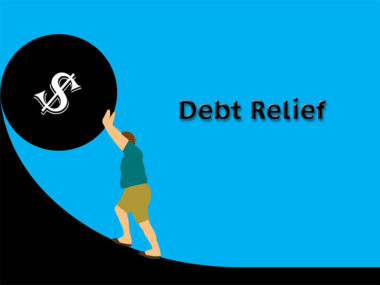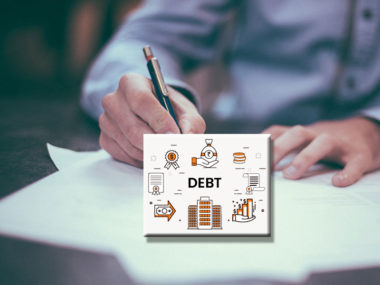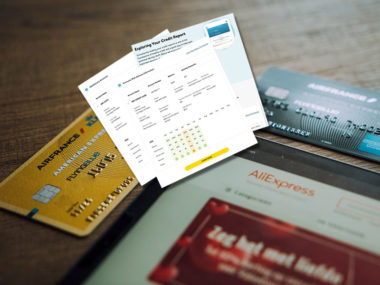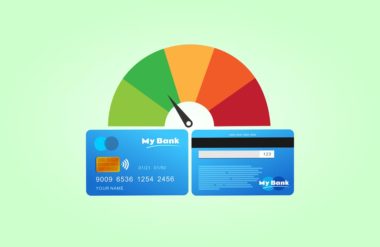In the past, you may have heard about the debt snowball method, which was originally coined by Dave Ramsey. This is a unique way to pay off debt that helps take the confusion out of calculating interest rates and making payments on the “right” debts. Using the snowball method, the goal is to build momentum when paying off debt, paying off more and more each month until you’re finally debt-free.
Table of Contents
What Is the Debt Snowball Method?
If you compare your debts to your assets and find that you owe more than you earn or own, it’s time to get to work paying those debts off. Using the snowball method, by which you start by paying off debts from smallest to largest, you can focus on paying off debts rapidly.
Over time, each debt that is paid off helps you gain momentum, because you take the payment you would normally make on the old debt each month and apply it forward toward the next-largest debt. The debt snowball method does not take interest rates into consideration, instead eliminating as many debts as possible (as quickly as possible) by tackling the lowest debts first. This can end up costing a bit more in the end, as interest can cause other debts to grow while you focus on paying down one balance at a time.
Using The Debt Snowball Strategy
To better understand the debt snowball method, it’s a good idea to look at examples. Let’s say that Lisa has seven outstanding debts. One is $30,000, the next is $24,000. The last five are smaller at only $500, $350, $300, $100 and $55. To pay these debts off, start with a debt snowball worksheet, so that you can compare the debts to the minimum payments you make each month and set up a plan for tackling your debt.
Build a Debt Snowball Worksheet
With your worksheet, start with a new spreadsheet open. Then, list your debts from smallest to largest in the left-hand column. Next, list all of the monthly payments in the second column. Lisa would list all of her debts, from smallest to largest, on lines 1 through 7 in column A. She’d also list the minimum payments on lines 1 through 7 in column B. Doing this, it’s easy to see what the debts are in order from smallest to largest and to see how much she’s required to pay on the debts each month.
Pay the Minimum on all but the Smallest Debt
Next, make sure that you are making the minimum payments on all but the smallest debt you have to pay each month. That guarantees that you won’t miss any payments or end up with penalties. For example, if Lisa pays $10 on the $55 loan, $20 on the $100 loan, $30 on the $300, $30 on $350, $40 on $500, $500 on $24,000 and $500 on $30,000, she’ll need to pay a minimum of $1,130 on her debts each month, and she’d need additional money to put more toward the smallest debt.
The exact amount you’d pay as a minimum payment on each debt varies, but it’s usually a percentage of the balance on your credit card or loan at the end of the billing cycle. As you reduce the amount you owe, the amount of interest you pay each month reduces as well, saving you money and helping you pay off your debts quickly for a solid financial victory.
Pay Extra Toward the Smallest Debt
After paying the minimums you owe, take any remaining funds and put them toward the smallest debt that remains. You may want to consider cutting spending in some areas, like canceling your cable subscription or reducing your phone’s data plan, so that you can have extra to put toward the debt.
Some easy items to cancel or activities to cut back on include:
- Your cable subscription;
- Data plans for electronics;
- Monthly subscription services;
- Shopping for clothing;
- Fast food or eating out.
You could also get a part-time job alongside your current day job or take on side hustles to make extra each month. Some ideas for side hustles include:
- Mowing lawns for neighbors;
- Driving for a ride-share service;
- Working on freelance projects online, like blogs or artwork;
- Shopping for those who cannot leave home, like busy parents or the elderly.
Take steps to get as much extra money as possible to put toward the smallest debt each month, so you can pay it off. In this case, Lisa would want to pay $55 toward the smallest debt as quickly as she can and would celebrate eliminating her first debt. Then, she would take the amount she was able to pay toward the $55 debt and add it to the minimum payment she makes on the next largest debt. This adds up over time, eventually leading to complete debt elimination.
Repeat the Process for Each Debt
Finally, repeat this process for each debt, moving on to the next smallest debt each time you pay one off. Always pay minimums on time to avoid penalties.
The next time you pay off a debt, take the amount you paid toward the first and second debts and add it to the minimum payment for the third debt. For Lisa, that would mean taking the $55 she could pay the first month (if it was paid in full in one month) and adding it to the $20 minimum payment for the $100 debt. With the debt snowball method, she’d pay off the $100 debt in two months and be able to pay off the next highest debt, $300, in around four. This process continues to add up, making it easier to pay off each higher debt in less time.
Is The Debt Snowball For You?
If this plan seems simple, it’s because it is designed to be as easy as possible. Budgeting and rolling your finances can help you pay debt down rapidly, so that you can free up your finances for the things you really want to do. While debt can take a while to pay off, you’ll have a solid plan and know exactly how long it will take you to pay off your debt following the method as designed. If you continue to add to your payments every time you get more cash in hand, you may even pay your debts off sooner than expected.
Keep in mind that interest rates aren’t a part of the equation, and they could impact you and result in higher costs over time. If interest rates or penalties concern you, there are other options you can consider as well, like the debt avalanche method which prioritizes the highest interest rate, rather than the smallest balance.
Other types of debt reduction plans include:
- Debt consolidation, which places all or most of your debts into a single loan and creates a single payment
- Negotiating lower interest rates, which reduces how much you pay over the course of the loan or on your credit card account
- Keeping a tight budget, which encourages you to spend less on anything that isn’t a need, so you can put more money toward your debts.
When it comes to debt elimination methods, there are many options. The snowball method can be an effective way to help you get rid of debt using a simple, straightforward solution.
Image Source: https://depositphotos.com/





